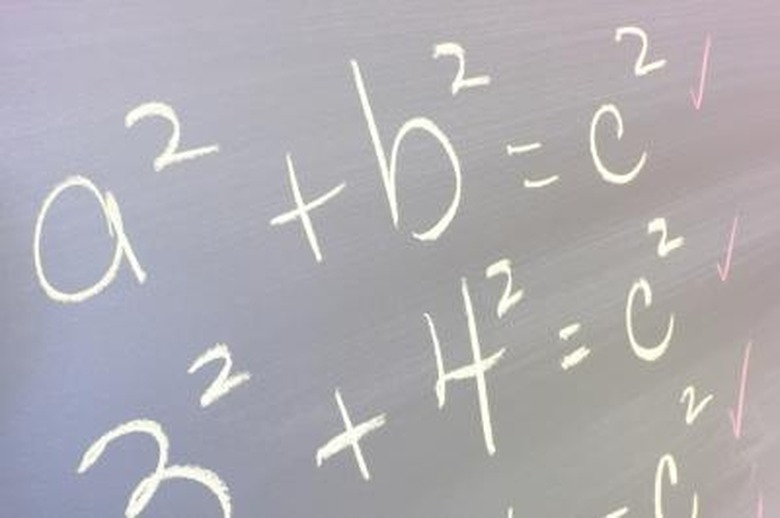Laws Of Exponents: Powers & Products
The efficiency and simplicity that exponents allow help mathematicians express and manipulate numbers. An exponent, or power, is a shorthand method for indicating repeated multiplication. A number, called the base, represents the value to be multiplied. The exponent, written as a superscript, represents the number of times the base is to be multiplied by itself. Because exponents represent multiplication, many of the laws of exponents deal with the products of two numbers.
Multiplication With the Same Base
Multiplication With the Same Base
To determine the product of two numbers with the same base, you must add the exponents. For example, 7^5 * 7^4 = 7^9. One way to remember this rule is to envision the equation written as a multiplication problem. It would look like this: (7 * 7 * 7 * 7 * 7) * (7 * 7 * 7 * 7). Since multiplication is associative, meaning that the product is the same regardless of how the numbers are grouped, you can eliminate the parentheses to create an equation that looks like this: 7 * 7 * 7 * 7 * 7 * 7 * 7 * 7 * 7. This is seven multiplied nine times, or 7^9.
Division with the Same Base
Division with the Same Base
Division is the same as multiplying one number by the inverse of another. Therefore, every time you divide, you are finding the product of a whole number and a fraction. A law similar to the multiplication law applies when performing this operation. To find the product of a number with base x and a fraction containing the same base in the denominator, subtract the exponents. For example: 5^6 / 5^3 = 5^6 * 1/5^3, or 5^(6-3), which simplifies to 5^3.
Products Raised to a Power
Products Raised to a Power
To find the power of a product, you must use the distributive property to apply the exponent to every number. For example, to raise xyz to the second power, you must square x, then square y, then square z. The equation would look like this: (xyz)^2 = x^2 * y^2 * z^2. This also applies to division. The expression (x/y)^2 is the same as x^2/y^2.
Raising a Power to a Power
Raising a Power to a Power
When raising a power to a power, you must multiply the exponents. For example, (3^2)^3 is the same as (3 * 3)(3 * 3)(3 * 3), which equals to 3^6. Some students become confused when trying to remember when to multiply the bases of an expression and when to multiply the exponents. A good rule of thumb is to remember that you never do the same thing to the bases and the exponents. If you have to multiply the bases, then add, opposed to multiplying, the exponents. But if you do not have to multiply the bases, as when raising a power to a power, you do multiply the exponents.
References
Cite This Article
MLA
Arnold, Kylene. "Laws Of Exponents: Powers & Products" sciencing.com, https://www.sciencing.com/laws-exponents-powers-products-8595355/. 24 April 2017.
APA
Arnold, Kylene. (2017, April 24). Laws Of Exponents: Powers & Products. sciencing.com. Retrieved from https://www.sciencing.com/laws-exponents-powers-products-8595355/
Chicago
Arnold, Kylene. Laws Of Exponents: Powers & Products last modified March 24, 2022. https://www.sciencing.com/laws-exponents-powers-products-8595355/
